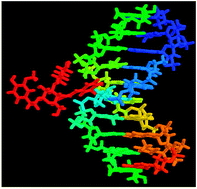Fast repair of DNA radicals
Abstract
This tutorial review highlights the mechanism of a novel non-enzymatic fast repair of

* Corresponding authors
a
School of Life Sciences, Lanzhou University, Lanzhou, China
E-mail:
zhengrl@lzu.edu.cn
Fax: +86 931 8912561
Tel: +86 931 8912563
b State Key Laboratory of Applied Organic Chemistry, Lanzhou University, Lanzhou, 730000, China
c ITODYS-CNRS UMR 7086, University Paris 7-Denis Diderot, Paris, France
d School of Bioengineering, Henan University of Technology, Zhengzhou, China
This tutorial review highlights the mechanism of a novel non-enzymatic fast repair of

 Please wait while we load your content...
Something went wrong. Try again?
Please wait while we load your content...
Something went wrong. Try again?
R. Zheng, Y. Shi, Z. Jia, C. Zhao, Q. Zhang and X. Tan, Chem. Soc. Rev., 2010, 39, 2827 DOI: 10.1039/B924875G
To request permission to reproduce material from this article, please go to the Copyright Clearance Center request page.
If you are an author contributing to an RSC publication, you do not need to request permission provided correct acknowledgement is given.
If you are the author of this article, you do not need to request permission to reproduce figures and diagrams provided correct acknowledgement is given. If you want to reproduce the whole article in a third-party publication (excluding your thesis/dissertation for which permission is not required) please go to the Copyright Clearance Center request page.
Read more about how to correctly acknowledge RSC content.
 Fetching data from CrossRef.
Fetching data from CrossRef.
This may take some time to load.
Loading related content
